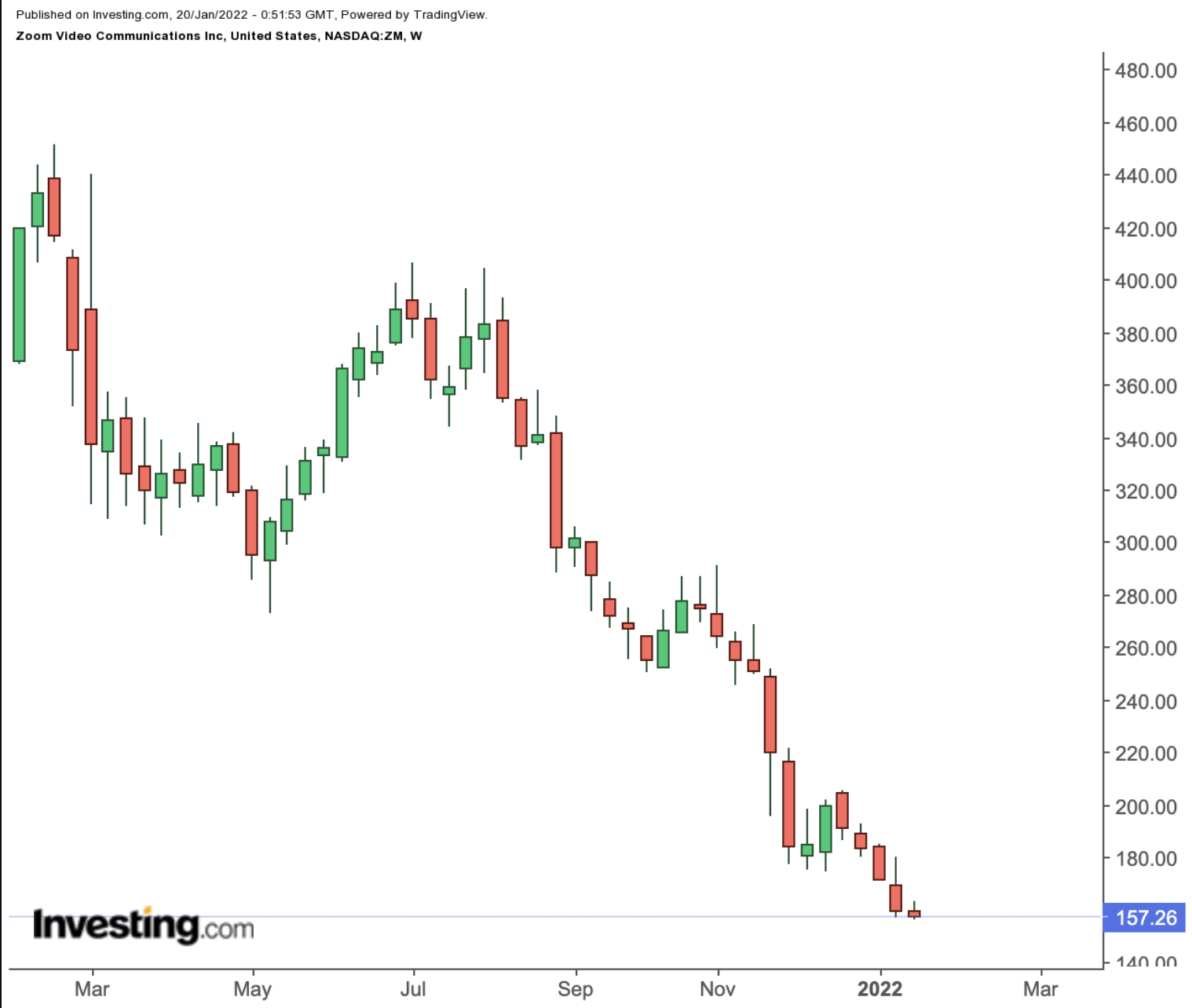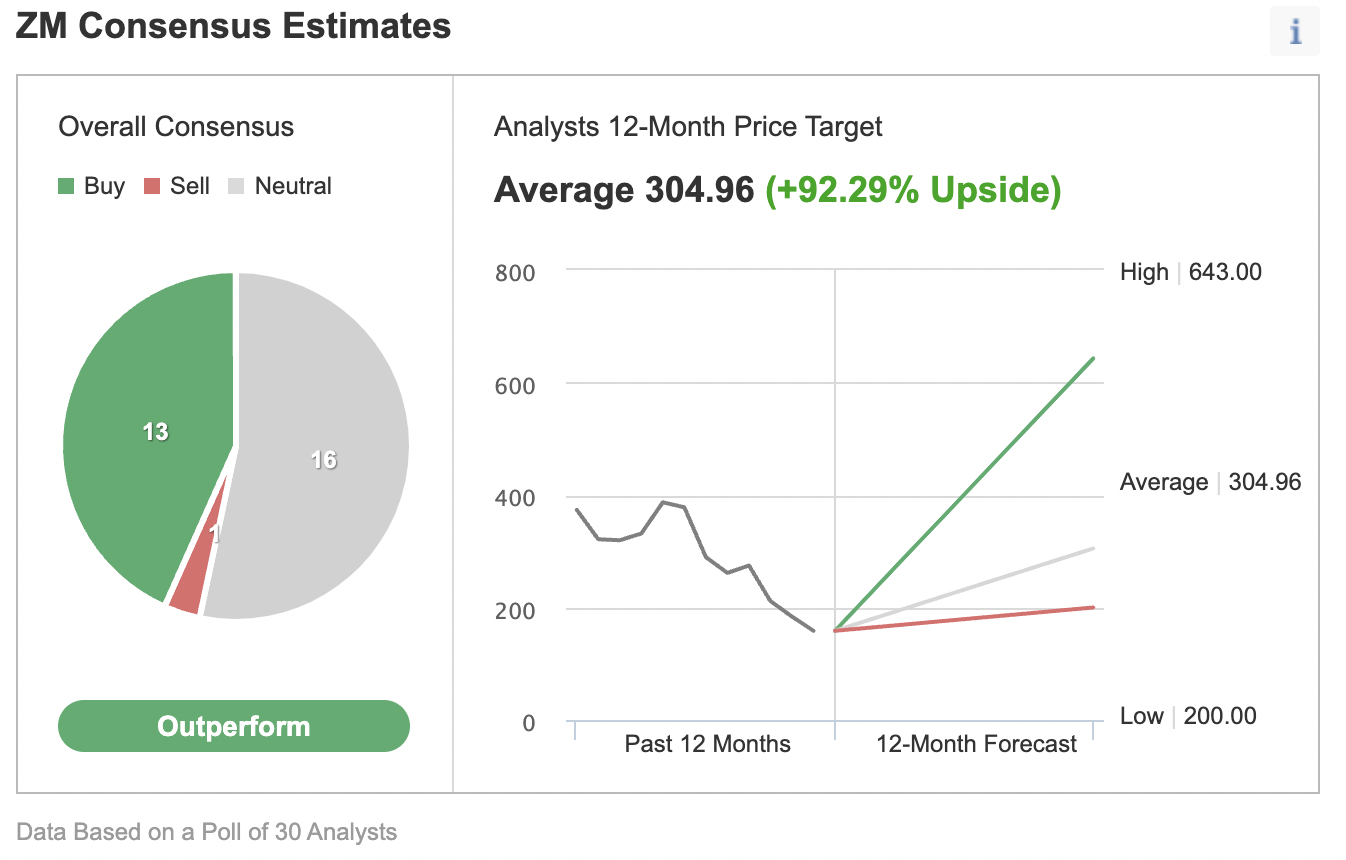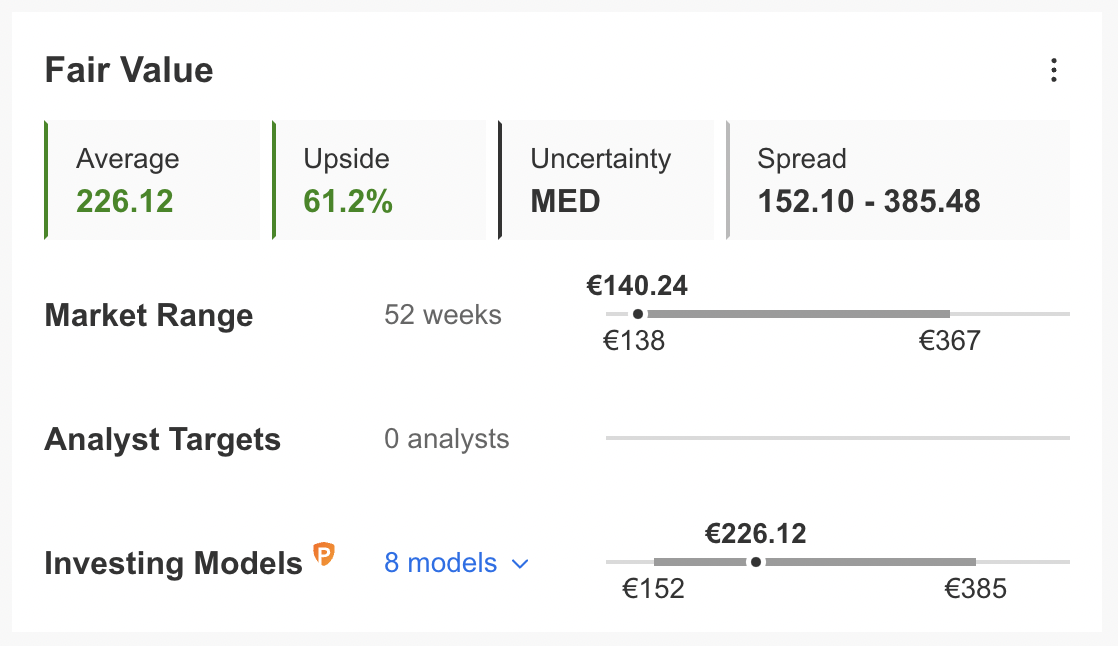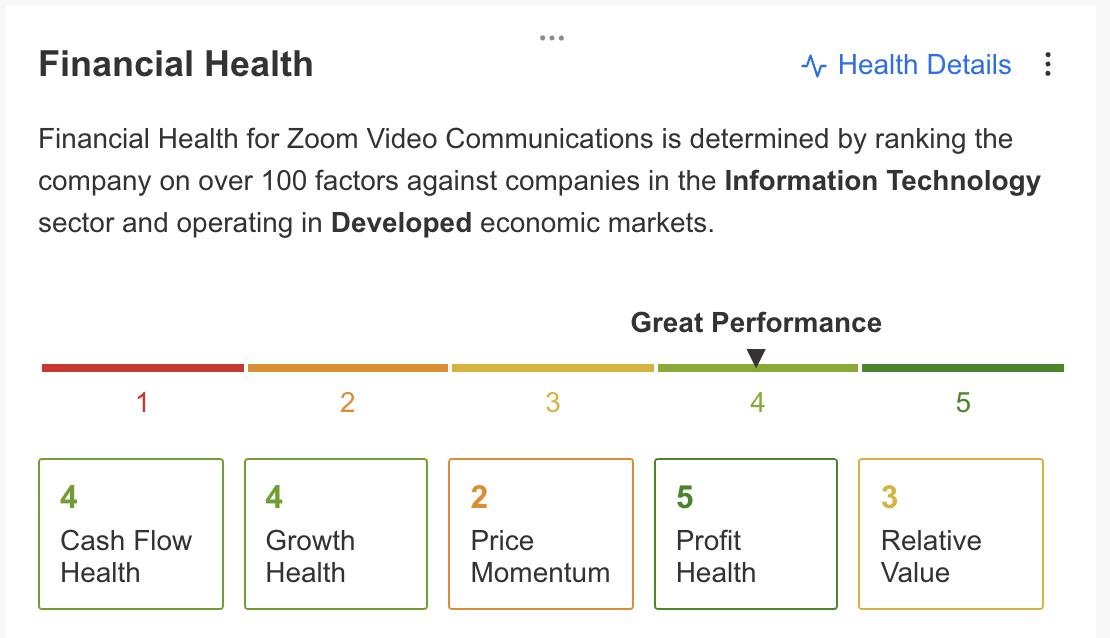- Zoom Video Communications stock is down about 14.1% year to date.
- As more workers return to the office, investors have been concerned about Zoom’s growth metrics
- Long-term investors could consider buying ZM shares around current levels
Investors in the software application technology stock Zoom Video Communications (NASDAQ:ZM) have not started the new year on a high note. ZM shares have declined more than 14% since the beginning of the year.
In comparison, the Dow Jones Software Index is down 10.2%. Meanwhile, the NASDAQ 100 Index has declined 6.9% so far in January.

On Feb. 16, 2021, ZM shares went over $450 to hit a record high. But in recent days, the stock saw a 52-week low. Its 52-week range has been $156 - $451.77; ZM's current market capitalization stands at $47.1 billion.
The video-chat name was one of the darlings of 2020, when work-from-home became a dominant investing theme. Most readers would be familiar with Zoom’s cloud-based software that enables users to have video calls. There are also chat tools available on the platform. The pandemic-induced increased demand for tele-health services and remote education also provided tailwinds for Zoom shares in 2020.
However, with the vaccine rollout in early 2021, stocks of stay-at-home technologies like Zoom came under pressure. Understandably, Wall Street has been concerned about frothy valuation levels as well as future growth metrics.
Zoom released Q3 figures on Nov. 22. The top line was $1.05 billion, up 35% year-over-year. Adjusted net income was $338.4 million, or $1.11 per share. Free cash flow stood at $374.8 million. A year ago, it had been $388.2 million.
On these numbers, CEO Eric S. Yuan said:
“Looking forward, we expect to close the year between $4.079 to $4.081 billion in total revenue, representing approximately 54% year-over-year growth, alongside strong profitability and operating cash flow growth.”
The San Jose, California-based company's communications group currently has more than 2,500 large customers, i.e., those enterprises that generated more than $100,000 in revenue in the trailing 12 months. Now, Zoom is working to enhance the platform with new applications.
Still, analysts point out that Microsoft's (NASDAQ:MSFT) Teams collaboration tools pose a major threat to Zoom’s future growth.
Prior to the release of the quarterly results, ZM stock was trading around $242. Now, Zoom shares change hands at $157.23 as of Wednesday's close.
Next Move In Zoom Video Communication Stock?
Among 30 analysts polled via Investing.com, Zoom shares have an “outperform” rating, with an average 12-month price target of $304.96. Such a move would imply an increase of well over 90% from the current level. The target range is between $200 and $643.

Chart: Investing.com
Similarly, according to a number of valuation models, like those that might consider P/B or P/S multiples or terminal values, the average fair value for ZM stock via InvestingPro stands at $226.12.

Source: InvestingPro
Meanwhile, we can look at Zoom’s financial health as determined by ranking more than 100 factors against peers in the information technology sector. In terms of profit health, it scores 5 out of 5 (top score). And cash flow and growth health stand at 4. Zoom's overall performance is rated “great.”

Source: InvestingPro
Long-term investors who are not concerned about short-term volatility in ZM stock could consider investing at current levels. Their price target should be around $220, as indicated by the stock’s approximate fair value.
Others, who are experienced with options, could look at alternative strategies. For instance, those who believe that the decline in Zoom shares could soon come to an end and that a new bull leg might begin could try a bull call spread.
However, most option strategies are not suitable for all retail investors. Therefore, the following discussion on Zoom stock is offered for educational purposes and not as an actual strategy to be followed by the average retail investor.
Bull Call Spread On Zoom Stock
Price At Time Of Writing: $160.10
In a bull call spread, a trader has a long call with a lower strike price and a short call with a higher strike price. Both legs of the trade have the same underlying stock (i.e. Zoom Video Communication) and the same expiration date.
The trader wants ZM stock to increase in price. But the expectation is for a moderate increase in Zoom shares.
Thus, in a bull call spread both the potential profit and the potential loss levels are limited. Such a bull call spread is established for a net cost (or net debit), which represents the maximum loss.
Let’s look at this example:
For the first leg of this strategy, the trader might buy an at-the-money (ATM) or slightly out-of-the-money (OTM) call option, like the ZM Apr. 14, 170-strike call. This option is currently offered at $14.10. It would cost the trader $1,410 to own this call option that expires in slightly less than three months.
For the second leg of this strategy, the trader sells a Zoom call, like the Apr. 14, 180-strike call. This option’s current premium is $10.45. The option seller would receive $1,045, excluding trading commissions.
Maximum Risk
In our example, the maximum risk will be equal to the cost of the spread plus commissions. Here, the net cost of the spread is $3.65 ($14.10 – $10.45 = $3.65).
As each option contract represents 100 shares of the underlying stock, i.e. ZM, we’d need to multiply $3.65 by 100, which gives us $365 as the maximum risk.
The trader could easily lose this amount if the position is held to expiry and both legs expire worthless, i.e., if the Zoom stock price at expiration is below the strike price of the long call (or $170 in our example).
Maximum Profit Potential
In a bull call spread, potential profit is limited to the difference between the two strike prices minus the net cost of the spread plus commissions.
So in our example, the difference between the strike prices is $10 ($180 – $170 = $10). And as we’ve seen above, the net cost of the spread is $3.65.
The maximum profit, therefore, is $6.35 ($10.00 – $3.65 = $6.35) per share, less commissions. When we multiply $6.35 by 100 shares, the maximum profit for this option strategy comes to $635.
The trader will realize this maximum profit if the ZM stock price is at or above the strike price of the short call (higher strike) at expiration, or $180 in our example.
Short call positions are typically assigned at expiration if the stock price is above the strike price (i.e., $180 in this example). However, there is also the possibility of early assignment. Therefore, the position would need monitoring up until expiration.
Break-Even ZM Stock Price At Expiration
Finally, we should also calculate the break-even point for this trade. At that price, the trade will not gain or lose any money.
At expiration, the strike price of the long call (i.e., $170 in our example) plus the net premium paid (i.e., $3.65 here) would give us the break-even ZM price.
In our example: $170 + $3.65 = $173.65 (minus commissions).
Bottom Line
Zoom stock, a pandemic darling during the early days of the global outbreak, has been battered in recent months. Yet, despite the short-term choppiness in shares, Wall Street agrees the growth trajectory remains intact for the communications platform as many companies are still likely to rely on its product offerings. Bear in mind, Zoom could also find itself a takeover candidate going forward.
